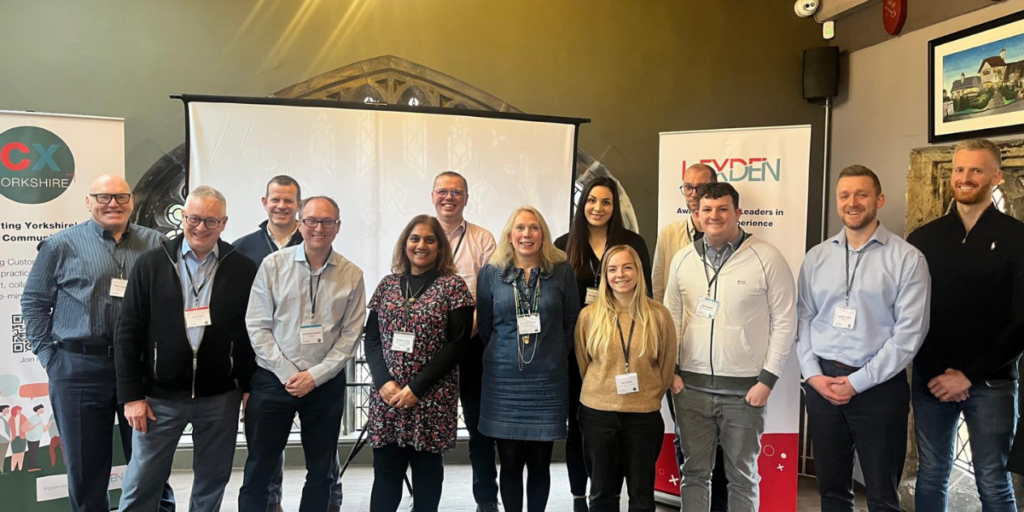When you provide a product or service to customers, what truly matters to them is how it enhances their lives. To achieve this, customers engage in various interactions. They seek solutions, place orders, make payments, and use your products or services. Sometimes, multiple providers consciously or inadvertently join forces to help customers achieve their goals. This interconnected web is what we call the customer ecosystem.
This ecosystem comprises three essential layers:
- Customer Centricity: It focuses on fostering a culture within your organisation that’s driven by customer experience motivations and methods.
- Customer Experience: This layer involves the direct interactions your organisation has with customers to fulfil their chosen objectives.
- Customer’s Reality: This layer delves into the customer’s priorities and goals, which guide their interactions with your organisation and other connected entities.

In the context of the customer ecosystem, merely ‘adding on’ customer experience often addresses only the middle layer, leaving customers feeling that it lacks depth and authenticity.
Examples
Consider a recent personal example: I rated Enterprise car hire poorly due to a challenging experience with Rye Street Car Repairs. This decision may seem harsh, but it highlights a crucial fact—customers view the companies they interact with as integral parts of their ecosystem. Every interaction serves a greater purpose for the customer, transcending individual organisations and products. Each entity within the ecosystem is linked to others before and after, and customers expect a seamless experience from start to finish.
However, organisations sometimes fall short in their customer-centric approach. Even with smooth interactions, they may overlook future engagements in the broader customer ecosystem.
For instance, picture a family missing their connecting flight due to an airport baggage handler system failure. This incident disrupted their entire journey, and they didn’t solely blame the airport.
Similarly, when I returned to collect my car from Rye Street Coach Repairs, I hadn’t received timely updates on the repair delay. This inconvenience didn’t just affect me; it disrupted my family’s plans. While the repair centre might have considered it a minor issue, it had a significant impact on my life. When I had to rent a car from Enterprise, they were unaware of the underlying reasons.
Later, when Rye Street informed me that my vehicle was ready, I explained my situation, hoping for some understanding. Surprisingly, they offered to return the rental car for me, thanks to their partnership with Enterprise. This gesture saved me valuable time on a busy workday.
However, a miscommunication occurred when the Enterprise representative at the garage informed me that I’d have to pay a £35 fee because I had booked the rental through a broker. This added frustration to an already challenging situation, emphasising the importance of understanding and empathising with the customer’s unique circumstances.
This disappointing experience resulted in a customer satisfaction score of 0 out of 100. A few days later, Enterprise informed me that they’d deduct the £35 from my deposit and requested feedback. I explained that their choice of car repair partner had tarnished my experience. I suggested they ensure their partners understand what is and isn’t acceptable.
Partnerships = shared accountability
This situation highlights that when companies collaborate, they share accountability. Partnerships, whether involving contact centres or affinity deals, require careful consideration and alignment with customer standards.
In this case, Rye Street Repairs damaged the reputation of another brand, Enterprise. This damage can recur as Rye Street serves numerous insurers. Customer-centricity must ensure that partners understand and uphold customer standards. Senior management must honour these standards when forming partnerships, rather than viewing them purely as profit opportunities.
In conclusion, Enterprise, this experience will impact your future business—not due to your ‘on us’ customer experience (which was generally good), but due to your choice of partners who deliver it on your behalf. It serves as a lesson in what customers now expect. Customer-centricity should extend its responsibility across the entire ecosystem. Neglecting those who care less about customers within your ecosystem could ultimately undo your brand.
If you want to delve deeper into the topic of customer-centricity, consider listening to our podcast episode, ‘The Customer-Centric Mindset.’




